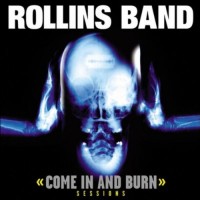
Rollins Band
Come In and Burn (1997)
Johnathon1069
By the time 1997 rolled around, Henry Rollins musical solo endeavors had been through a number of changes. The earliest, Henrietta Collins and the Wifebeating Childhaters, would later morph into Rollins Band. At this point, the band musically bared a stronger resemblance to Black Flag with a deeper debt owed to funk and metal than Rollins’ previous band. While Chris Haskett would prove to be the only remaining member by the time Come In and Burn was released, the band’s sound had changed drastically by this time.
Coming off Weight, which featured the band’s biggest hit “Liar”, the band found itself at a crossroads musically. The band had delved more into funk and jazz territories, since the edition of bassist Melvin Gibbs on Weight. Unlike many of his hard rock brethren whose sound developed and changed as the nineties moved on the band was held back by one major factor. Henry Rollins isn’t a great singer. While bands like Soundgarden and Mudhoney had frontmen capable of changing their vocals styling as the band developed, Rollins Band didn’t have the luxury. While Rollins voice has always been capable of raw brutality, expression beyond that has never been his strong suit with a musical backing.
While the musical progression on this release is certainly worth noting, the jazz-metal fusion on this album is amongst some of the most interesting hard rock churned out in the 90’s. It became obvious, especially after hearing the next Rollins Band release with a new lineup three years later that Rollins wasn’t in the same place his band was. While Rollins and his band hit the ground running on the more traditional rock of album opener “Shame”, the rest of the album didn’t flow as well. This likely spurred the dissolution of this incarnation of Rollins Band after this album’s release.
While songs like “Starve,” “On My Way to the Cage,” and “Saying Goodbye Again” would fit in nicely with Rollins Bands’ previous catalogue, this album was by and large a disappointment for fans as well as the band. It’s not surprising this would be the last recorded go around for this incarnation of the band, and Rollins would only do two more studio recordings before calling it a day musically. Rollins said he was out of ideas at the time of the bands fine dissolution. However, listening to this twenty years after its release, it sounds like he may have run out of them sooner than he was willing to admit to himself.